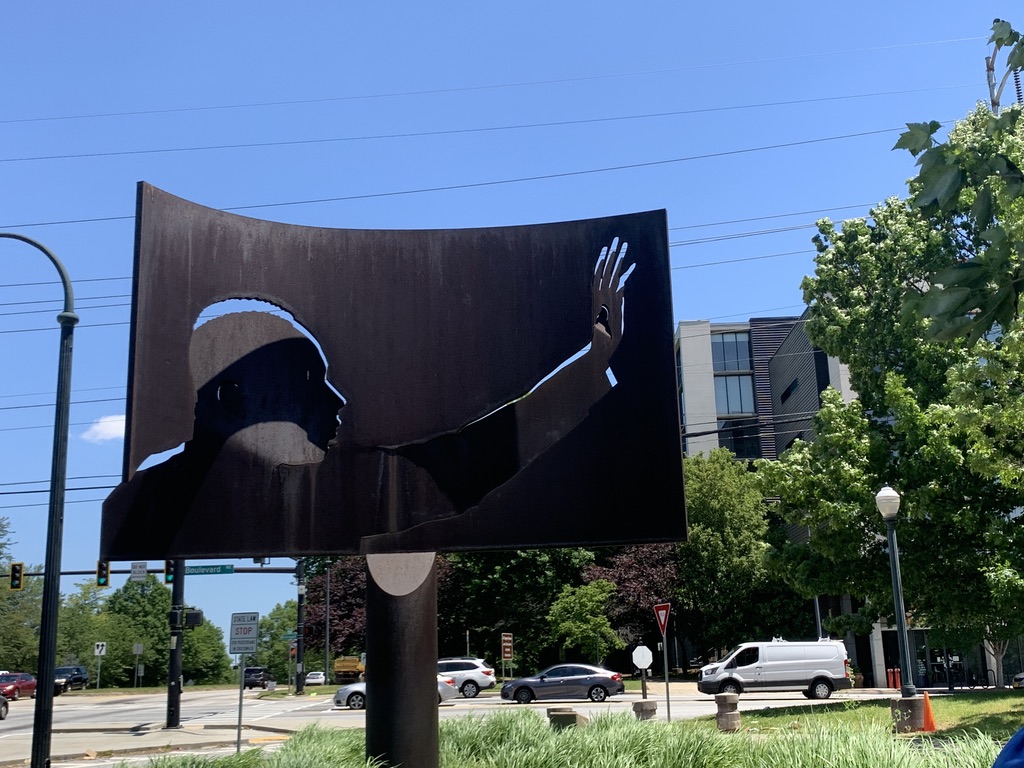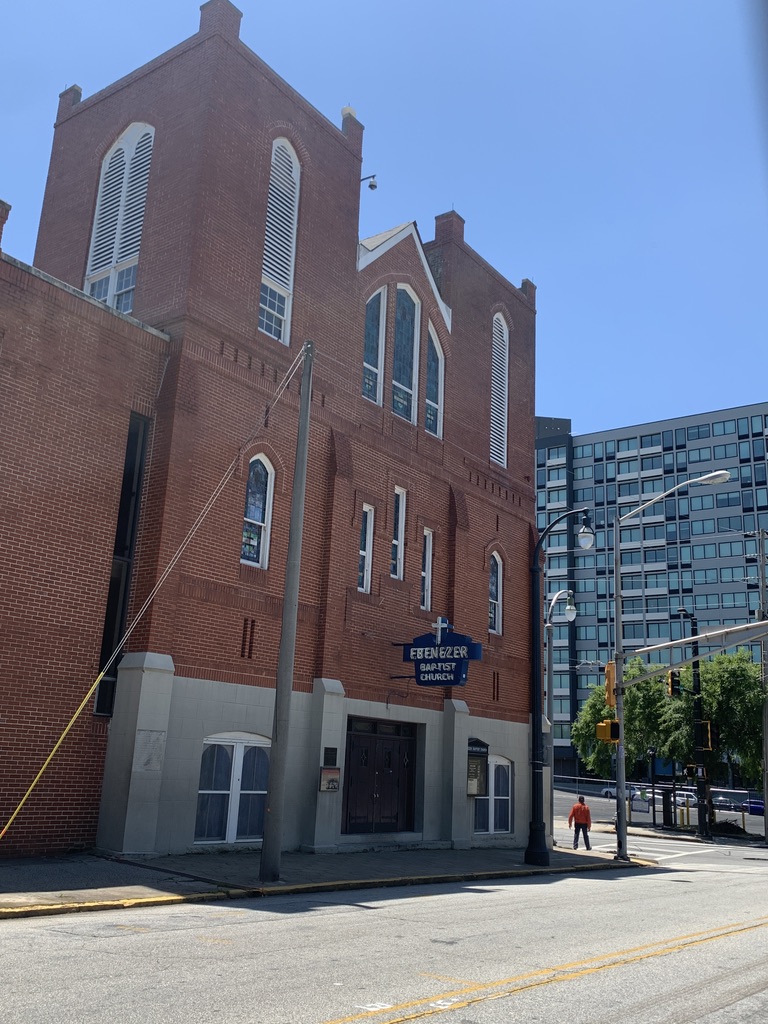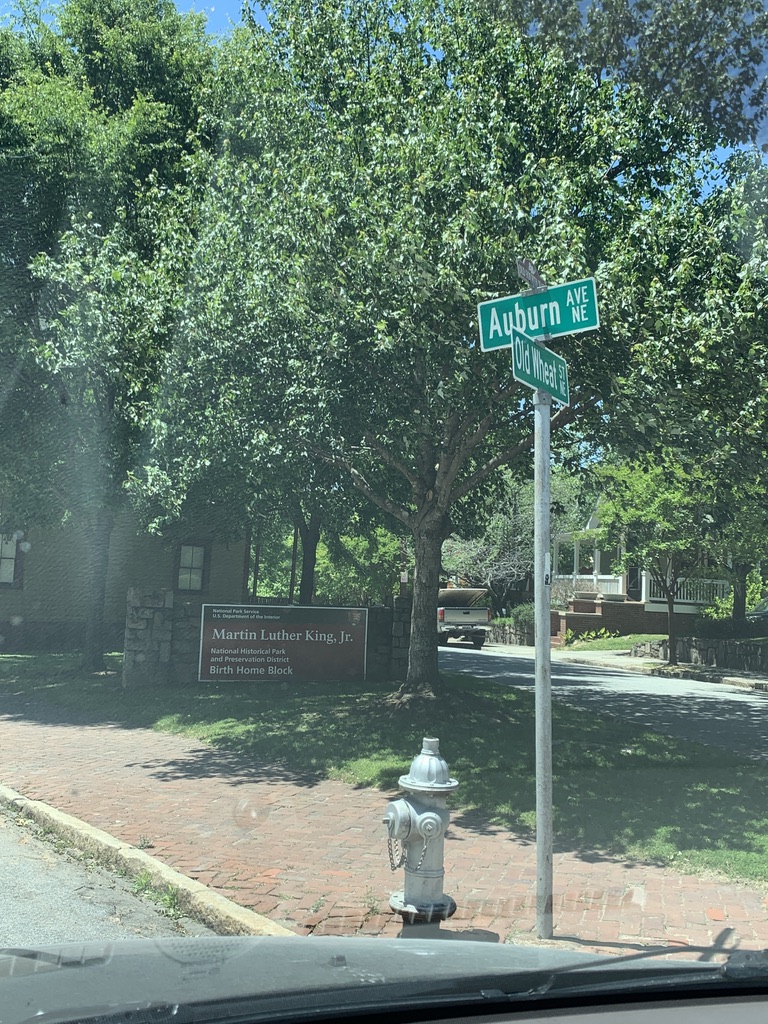- Sign up for our Free newsletter for discounts, tips and even more!
Share this page:
Martin Luther King Jr.
The Martin Luther King Jr. site should be the first stop on any visit to Atlanta.
There are many ways to explore Martin Luther King Jr.'s (MLK) life and legacy in Atlanta. All of them are worth your time. However, it can be daunting and a bit fractured – there are many different places and people involved. So if you’re wondering how to maximize the experience, I will break it down for you.
Martin Luther King Jr. National Historic Park – Everything You Need to Know
On this page you’ll find:
- MLK’s background
- How to get the most of your visit – when to go, how to plan and an ideal itinerary
- Other important Civil Rights sites and how to see them
- Walking Map of Area
Martin Luther King Jr.’s Life
The story of Martin Luther King Jr.'s birth, life, tragic death and lasting legacy has been covered for decades. Entire libraries are full of important biographies about him. Very smart people have devoted their careers to writing about him. I am not presumptuous enough to even try to do his story justice here.
 The entrance to the MLK Center features an iconic sculpture in the neighborhood
The entrance to the MLK Center features an iconic sculpture in the neighborhoodMartin Luther King Jr. led a short-lived but extraordinarily consequential life. Yes, there are controversies about his past. Yes, no one is perfect. There is much to be said for how much the United States as a country has lived up to his promise and dream. There are numerous sources for these discussions, and they are worthwhile conversations.
I highly recommend reading Taylor Branch’s works about Martin Luther King Jr. He is a Pulitzer Prize winning author and one of the most well-known experts on MLK. His trilogy about Martin Luther King Jr. and the Civil Rights Movement are must-reads for anyone who wants to take a deep dive into this seminal figure and period in American history.
Here are some other books that experts suggest.
Martin Luther King Jr. National Historical Park
Hours and Dates of Operation
The Visitor Center, Historic Ebenezer Baptist Church, and Freedom Hall are open from 9 a.m. to 5 p.m. daily.
The Birth Home is open for ranger-led tours from 10 a.m. to 4 p.m. daily.
Fire Station No. 6 is staffed by park volunteers and is open from 9 a.m. to 5 p.m. when volunteers are available.
All facilities are open year-round, but closed on January 1, Thanksgiving Day, and December 25.

How to Get There
The MLK Jr. National Historical Park is located at 450 Auburn Avenue, NE, Atlanta, GA 30312
Getting to the MLK center by car
The entrance to the park and free parking is located on John Wesley Dobbs Ave. Parking on the street is hit or miss and you have to pay for it. Some GPS systems won’t take you to the exact parking area, so your best bet is to enter these EXACT GPS coordinates for the lot: 33°45'32.43"N, 84°22'24.00"W. This will take you to the free lot where it’s a short walk across Irwin Street to the Visitor Center.
Getting to the MLK center using public transportation
The park is readily accessible by public transportation.
One of my favorite things to do is take the Atlanta Streetcar from Downtown to the King Center. The Streetcar costs $1, is good for two hours and makes several stops on the way (check out the Sweet Auburn Curb Market).
There is no direct train to the park – Route 3 and Route 99 buses are the ones that stop here.
What to See
Want to know how to get the most out of a visit to the Martin Luther King Jr. National Historical Park?
This is THE top tourist destination in Atlanta and is a must-see on any list. Every time I go, I learn something new and it’s an emotional experience.
However, you need a plan. It is a sprawling “park” – it is NOT just a building, or as the name implies, a park. It’s actually a whole area of the city comprised of multiple buildings and areas that were part of MLK’s life, the Civil Rights Movement and, of course, Martin Luther King Jr.'s legacy.
The Martin Luther King Jr. holiday weekend is always observed on the third Monday in January - near his birthday.
As you can imagine, that is one of the most popular times to visit the park. The entire city of Atlanta participates in actives over the Martin Luther King Jr. Holiday and it's a special time. But the park and all sites will be crowded! I have some tips for how to get the most out of it.
If you are planning to come during Martin Luther King Jr. weekend, make sure to get to the park as soon as it opens at 9 am – try for Sunday morning if you can. IMMEDIATELY go to the Visitor Center to TRY to sign up for the only part of the park that requires a tour and be prepared to NOT make the tour – or at the very least to come back later for it. More on that below.
The Martin Luther King, Jr. National Historical Park is, in fact, part of the U.S. National Park Service.
What does this mean?
Well, for one thing, that means it’s free admittance to the park. That’s really something when you realize how much there is to see. Most sites are self-guided with one notable exception, which I’ll explain.
Itinerary
A typical visit will take about two hours. No matter how long you plan to stay, first stop in the Visitor Center where you can pick up a map and sign up for the Birth Home Tour – the one site that requires reservations.
There are a few exhibits in the center as well as an introductory film. Some exhibits are permanent and there are also rotating ones. If you are bringing children, make sure to see the “Children of Courage” exhibit which tells the story of the Civil Rights Movement and is geared towards younger visitors.
Next, head to the International World Peace Rose Garden on the Peace Plaza. This garden is one of five major World Peace Rose gardens around the world to promote peace. The Martin Luther King Jr. garden was planted in 1992 as an artistic interpretation of his life and ideals of peace through nonviolence. The garden is designed in a starburst and features 185 roses in a variety of colors and fragrances. The gardens are at their most beautiful in spring.
Cross over the famous Auburn Avenue to the Historic Ebenezer Baptist Church. This church has been the spiritual center of this part of the city since its founding in 1886 – although the current building was built at its present site in 1922. The church pastors have a long history of standing up for equality and rights, beginning with Rev. A.D. Williams, leading to Rev. Martin Luther King Sr. and, of course, Martin Luther King Jr., who became a co-pastor with his father in 1960.

When you get to the church, head upstairs to the Sanctuary where you will hear MLK’s famous sermons and speeches through the loudspeakers. The church plays many speeches, including his most famous ones, even ones that weren’t delivered at the church. That is not important. What is important is how moving and chilling the experience is – hearing his booming voice echo in the church sanctuary is emotional. I have never, ever, been to the church and not turned into a puddle hearing these words. Bring tissues.
The church’s Fellowship Hall features exhibits about the history of the church and a video by Martin Luther King Jr. sister who talks about the family and the church.
One interesting and sad fact: MLK’s mother Alberta, was the organist for the church and was assassinated while playing during Sunday services. The killer allegedly was attempting to murder King Sr. but Alberta was closer. And in another weird twist, King Sr. was once held hostage by Samuel L. Jackson – before he was an actor. Jackson and other Morehouse College students were part of the emerging black power interest and were demanding more power at their own institutions.
The King Center
Next on the tour stop at The King Center. This is the centerpiece of the tour, established by his wife Coretta Scott King right after his assassination. It is a memorial to Martin Luther King Jr. and Mrs. King, but also a center devoted to the principles MLK taught throughout his life.
The King Center features a reflecting pool and eternal flames at Dr. and Mrs. Kings’ tombs. This is a serene, solemn, and sacred spot, although it feels uplifting, too.
MLK Birth Home Block
From here, make your way across Boulevard and you’ll find yourself on the “Birth Home Block.” You can stroll up and down this street and stop at various exhibits that tell the about the people and places on Auburn Avenue – the center for black life and culture in Atlanta.
One stop to check out is Fire Station No. 6, which was built in 1894 and served as a community center for the area until the early 1990s. Now, as part of the Park Service, you can visit and learn about the desegregation of the Atlanta Fire Department.
Of course, the focus of the Birth Block is the previously mentioned Birth Home. MLK was born here on Jan. 15, 1929 and lived here until he was 12. The home is restored and is a highlight of a visit.
However, as I mentioned, the Birth House is the ONE thing you need to schedule a tour to visit. It is not easy. The first time I visited here I didn’t know about this and was really disappointed.
In fact, it took me a couple of years of trying before I learned how to have the best chance of getting on a tour.
You need to register at the Visitor Center which opens at 9 am – but the Birth Home doesn’t open until 10 am. The tour is free and led by park rangers so it’s wonderful, but it’s limited to 15 people and is one of the most popular parts of a visit.

Again, if you plan to come during the MLK holiday weekend, be patient and go to the park first thing and be prepared to sign up for a much later tour. They operate from 10 am to 4 pm. No advanced reservations are available. It isn’t ideal for planning but if you know and are prepared – and prepared for possibly having to skip it – it is manageable.
The end of your visit should take you back to the Visitor Center and you can visit the Gahndi Statue – donated by the India Council for Cultural Relations and The Embassy of India U.S.A. – in recognition of both men’s focus on searching for peace through nonviolence.
MLK Civil Rights Walk of Fame
Next, stroll down the neighboring International Civil Rights Walk of Fame, created in 2004 to honor the participants of the Civil Rights Movement. The walk includes footsteps crafted from granite and bronze to memorialize those who sacrificed in the march toward equality.
Other Civil Rights Locations
Atlanta was one of the main centers for the Civil Rights Movement – which took place across the South in the 1950s and 1960s and there are many other sites to see.
Be sure to check out the National Center for Civil and Human Rights, a relatively new center in Downtown Atlanta that focuses on the U.S. Civil Rights Movement. The APEX Museum on Auburn Avenue is devoted to African-American history and the contributions of African-Americans in Georgia.
The Elbert P. Tuttle U.S. Court of Appeals in Downtown is the seat of the 5th Circuit Court of Appeals and the judges in here decided the crucial Brown V. Board of Education case that desegregated public schools. And the Jimmy Carter Presidential Library and Museum, which is close to the MLK area, features a great MLK exhibit of photographs.
Civil Rights Tour
If you want an up-close and personal tour, check out the Civil Rights Tour, operated by Tom Houck, a local legend. He worked with the NAACP and the Southern Christian Leadership Conference across the South and participated in numerous demonstrations for the Civil Rights Movement. He was an aide to MLK until his assassination and has been involved in local media, politics and justice causes ever since. Mr. Houck, by the way, is white. His tour is booked months in advance so plan accordingly.
The Tour starts at the King Center and traces the Civil Rights Movement through the city – with narration by Mr. Houck but also by Civil Rights cons Andrew Young, John Lewis and Julian Bond who talk about both the Movement and the evolution of Atlanta. This is the only tour that takes you to the site of the famous Atlanta Student Movement Rush Memorial Church, to the graves at South-View Cemetery of King Sr. and John Wesley Dobbs.
Many other Southern cities have wonderful exhibits and museums to the Civil Rights Movement, such as Selma, Birmingham and Montgomery in Alabama and Memphis in Tennessee.
New! Comments
I'd love to hear what you think! Please leave a comment below.